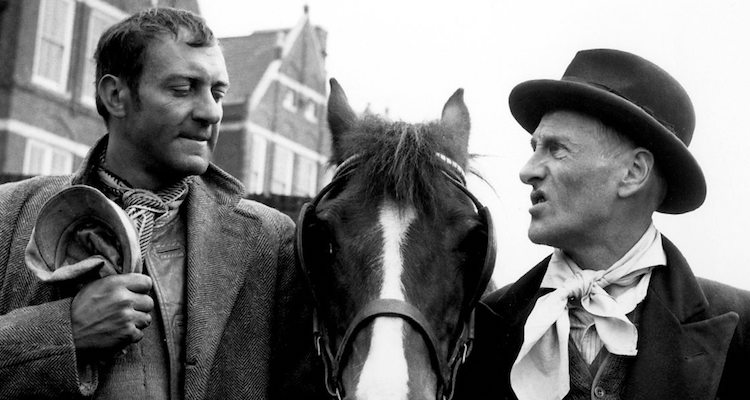The Legacy Of Steptoe And Son – Part 1
An Introduction and Early Days
It was 60 years ago this month we met the world’s most famous rag and bone men and they still make us laugh today. Over the coming weeks over three posts that look back at this classic sitcom.
Steptoe and Son is a British sitcom written by Ray Galton and Alan Simpson about two rag and bone men living in Oil Drum Lane, a fictional street in Shepherd’s Bush, London. Eight series were produced by the BBC in two blocks from 1962 to 1965, followed by a second run from 1970 to 1974, for this run it was broadcast in colour, something the writers were not sure about as it deflected from the bleakness and greys that fitted so well into the background.
Steptoe was so different to any sitcoms that had gone before or at the time, even today it stands away from the normal set up of a traditional sitcom. Where as other comedies revolved around interfering mothers-in-law and the sudden failure of the hero’s braces the moment his boss appeared, Steptoe and Son was different in that it focussed on the relationship between a Father and Son who not only have to live together, but work together.
The comedy came from the the fact that the characters were complete opposites of each other Harold is the 40 year old son with aspirations of better things in life, without his Father, despite this he sees himself as working class and is a staunch supporter of the Labour Party. At the other end of the scale we have Albert, the Father, set in his ways, not particular over hygene (an element that presents great comic effect in many episodes). Albert sees himself as the Steptoe of Steptoe and Son (in actual fact The Steptoe and Son refers to his Father and him) and as such sees himself as management and as such he feels that he should lend his political support to the Conservative Party, again in complete contrast to Harold.
To rub salt into Harold’s wounds everything he tries the old man either pulls him back or is better at it than he is. Nowhere is this more evident than the episode Loathe story. First Albert beats Harold at badminton in the yard, then later in the story manages to thwart his chances with an upmarket girlfriend, to whom he has become engaged and whose Mother is insistent on meeting Harold’s family.
[AdSense-A]
So How Did It Come About ?
Writers Ray Galton and Simpson had had great success writing for Tony Hancock, however in 1961 Hancock parted company from both the BBC and his writers. Keen to keep the two writers, then head of BBC Comedy, Tom Sloan commissioned a series of six one off comedies under the banner “Galton and Simpson’s Comedy playhouse”. After writing the first five and the realisation that they had cost more to produce than expected, the two writers found themselves with writer’s block. The idea came to them to write a two hander set in one room, they considered the idea of the two characters being brothers, but decided that the idea of Father and Son worked best. So was born the finished product “The Offer”.
Having just finished a successful seven year run with Hancock neither of the two writers were looking to write another series. However then head of BBC comedy, Tom Sloan had other ideas, he told the two writers during rehearsals that “The Offer” was a definite series pilot: he saw that the Steptoe idea had potential, as did the audience of that edition of Comedy Playhouse. Galton and Simpson were reportedly overwhelmed by this reaction, and later that year, the first of eight series was commissioned.
[AdSense-A]
Casting
In a break with tradition the lead parts were played by two highly talented Shakesperian actors, in fact Harry H. Corbett was perceived as the English Marlon Brando in his early career. Wilfrid Brambell was an Irish actor who despite his age had gained a reputation for playing old men, so successful was he that he hardly ever stopped working throughout his career.
Audience Reaction
Steptoe and Son was a huge hit, at it’s peak it regularly drew audiences of over 20 million.
In part 2
A break, a colour problem, spinning off.

